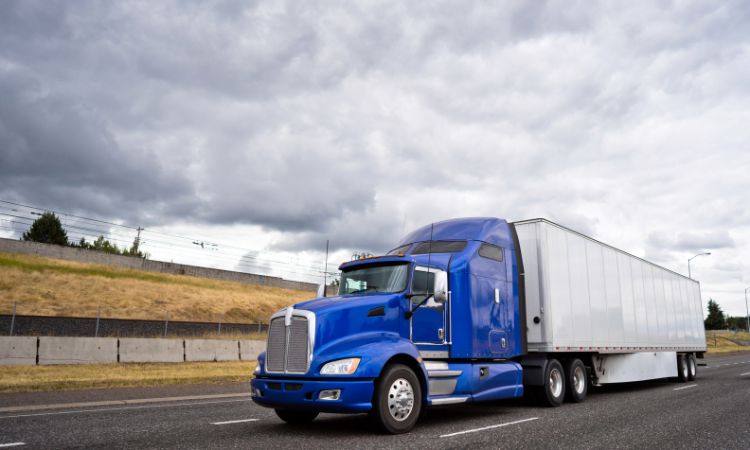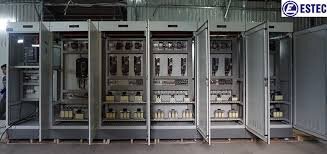The global semi-trailer market size is expected to grow at a CAGR of 5.6% during the forecast period of 2024-2032. This growth is driven by the increasing demand for efficient transportation solutions and the expansion of various industries reliant on logistics. Understanding the dynamics of this market is essential for stakeholders, including manufacturers, logistics companies, and investors, as they navigate an ever-evolving landscape.
Market Overview
Semi-trailers play a pivotal role in the logistics and transportation industry, providing an essential link in the supply chain. These trailers, which require a towing vehicle to operate, are primarily used for transporting goods across various distances. Their versatility and adaptability make them a vital component of freight transportation, whether for perishable goods, heavy machinery, or general cargo.
Market Size and Share
The semi-trailer market has experienced robust growth in recent years, bolstered by the rise of e-commerce and increasing freight demands. As of now, the market is valued at several billion dollars, with projections indicating substantial growth through the end of the decade. The anticipated CAGR of 5.6% reflects the ongoing transformation in global trade dynamics, technological advancements, and changing consumer behaviors.
Market Segmentation
By Type
The semi-trailer market can be segmented into several types, each with unique characteristics and applications.
- Flat Bed: Flatbed trailers are favored for their versatility, capable of carrying oversized loads that don’t fit into standard enclosures. This segment has seen significant demand in the construction and heavy machinery industries.
- Dry Vans: These are the most commonly used semi-trailers, ideal for transporting dry goods. Their enclosed nature protects cargo from weather conditions, making them essential for many businesses.
- Refrigerated: Also known as reefers, refrigerated trailers are crucial for transporting perishable goods. The demand for these trailers is expected to surge due to the rising consumption of perishable food items and pharmaceuticals.
- Lowboy: Lowboy trailers are designed for transporting heavy and oversized loads, such as construction equipment. Their unique design allows for a lower center of gravity, making them suitable for transporting tall machinery.
- Tankers: These trailers are essential for the transport of liquids, including chemicals and fuels. Regulatory compliance and safety considerations are key drivers in this segment, influencing growth prospects.
- Others: This includes niche segments like car carriers and specialty trailers, which cater to specific needs in the logistics sector.
By Foot Length
The semi-trailer market can also be categorized based on foot length:
- Up to 45 Foot: Trailers of this size are popular for local deliveries and short-haul routes. Their compact size makes them suitable for urban environments.
- Above 45 Foot: Longer trailers are increasingly used for long-haul transportation, where efficiency and payload capacity are paramount. This segment is witnessing a steady rise due to the demand for bulk transportation.
By Tonnage
Tonnage is another critical segmentation factor:
- Below 25 Ton: This category serves lighter loads and is commonly used for local deliveries.
- 25-50 Ton: Trailers in this range are versatile, catering to various industries, from automotive to consumer goods.
- 51-100 Ton: These trailers are often employed in construction and heavy machinery transport, where the need for durability and strength is paramount.
- Above 100 Ton: Heavy-duty trailers designed for transporting oversized equipment and materials fall into this category, driven by growth in sectors like construction and mining.
By End-Use
The end-use segment showcases the various industries that rely on semi-trailers:
- Automotive: The automotive sector significantly drives demand for semi-trailers, particularly for transporting vehicles and parts.
- Chemical: The need for safe and compliant transportation of chemicals is increasing, creating growth opportunities for specialized tankers.
- Others: This includes various industries such as retail and manufacturing, all of which depend on effective logistics solutions.
Regional Analysis
Geographical factors also play a crucial role in the semi-trailer market’s dynamics. Key regions include:
- North America: The largest market, driven by a robust transportation infrastructure and high demand from various sectors.
- Europe: Growth in e-commerce and an emphasis on sustainable logistics are driving the semi-trailer market here.
- Asia-Pacific: Rapid industrialization and urbanization in countries like China and India are propelling demand for semi-trailers, making this region a key growth area.
- Latin America and the Middle East & Africa: Emerging markets are also showing potential due to increasing infrastructure developments and investment in logistics.
Competitive Landscape
The competitive landscape of the semi-trailer market is characterized by the presence of several key players, each vying for market share. Major manufacturers are continuously innovating to enhance the efficiency and durability of their products. Recent trends include mergers and acquisitions aimed at expanding product portfolios and entering new markets.
Technological advancements, such as the integration of telematics and smart features in semi-trailers, are becoming crucial for competitiveness. Companies are investing in research and development to create trailers that meet evolving customer needs, such as enhanced fuel efficiency and sustainability.
Future Trends and Forecasts
As we look toward the future, several trends are expected to shape the semi-trailer market:
- Sustainability: There is a growing emphasis on environmentally friendly logistics solutions. Companies are exploring electric semi-trailers and alternative fuel sources to reduce their carbon footprints.
- Technological Integration: The adoption of advanced technologies, including IoT and automation, will enhance the efficiency of fleet management and improve overall logistics processes.
- E-commerce Growth: The continued rise of e-commerce will fuel demand for versatile transportation solutions, particularly in the refrigerated and dry van segments.
- Regulatory Compliance: As regulations around safety and emissions tighten, manufacturers will need to innovate to ensure their products comply with new standards.

